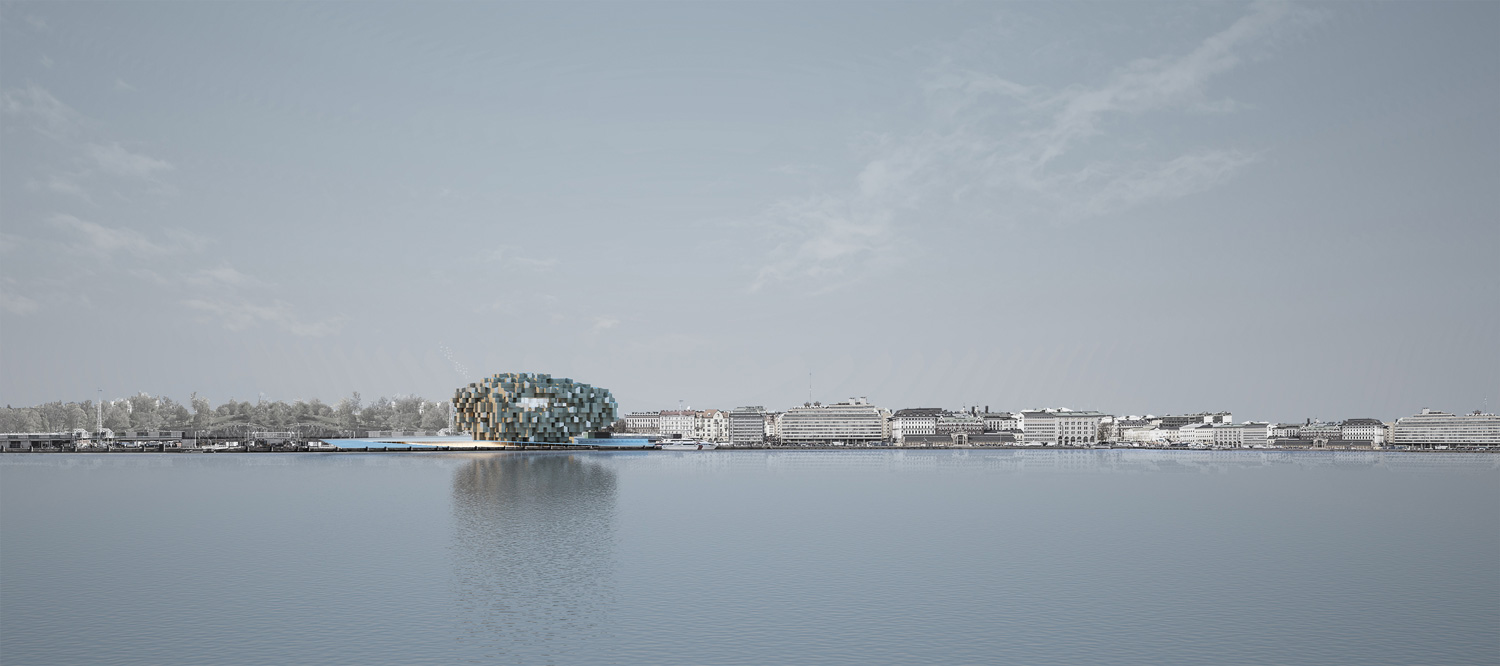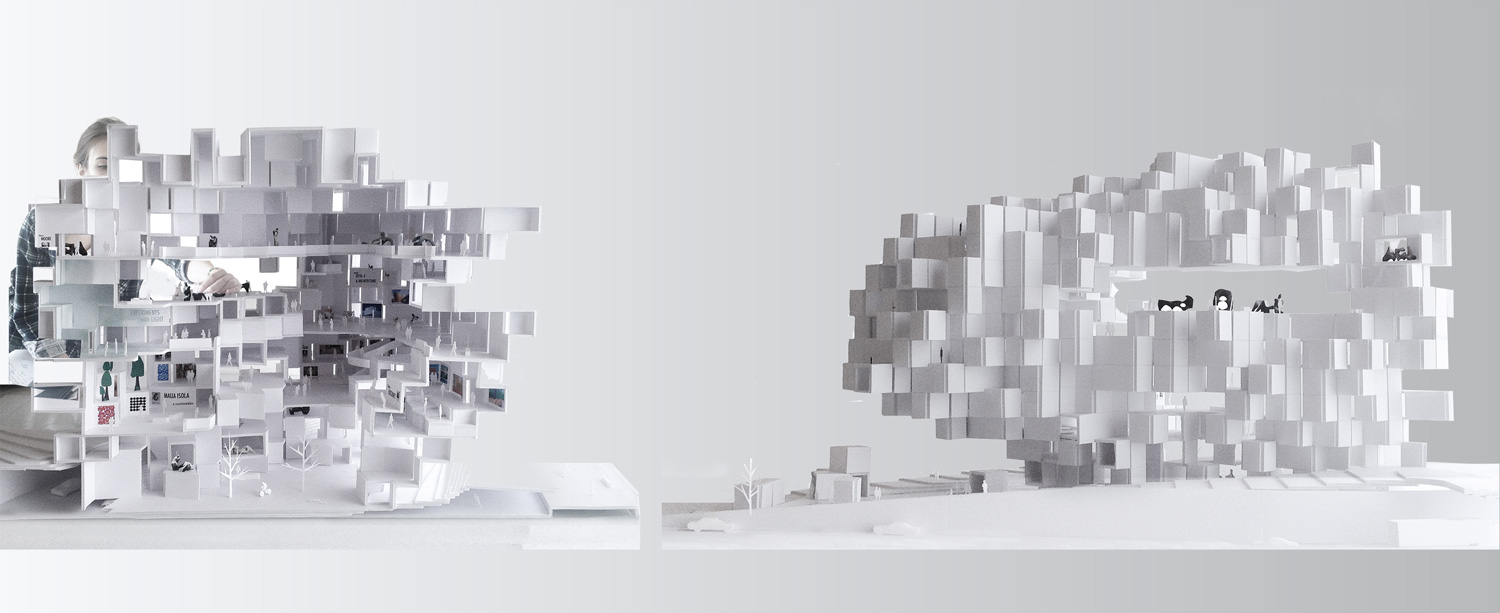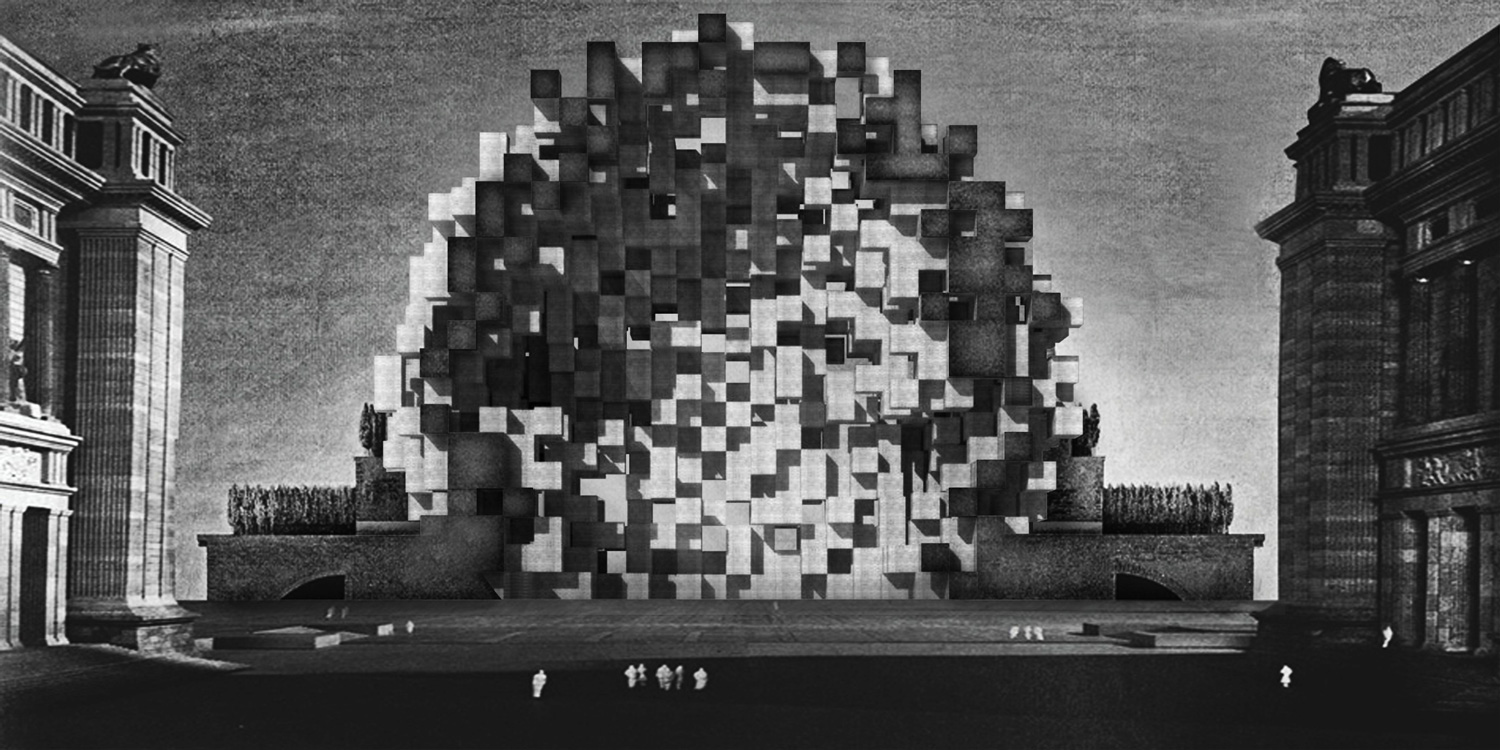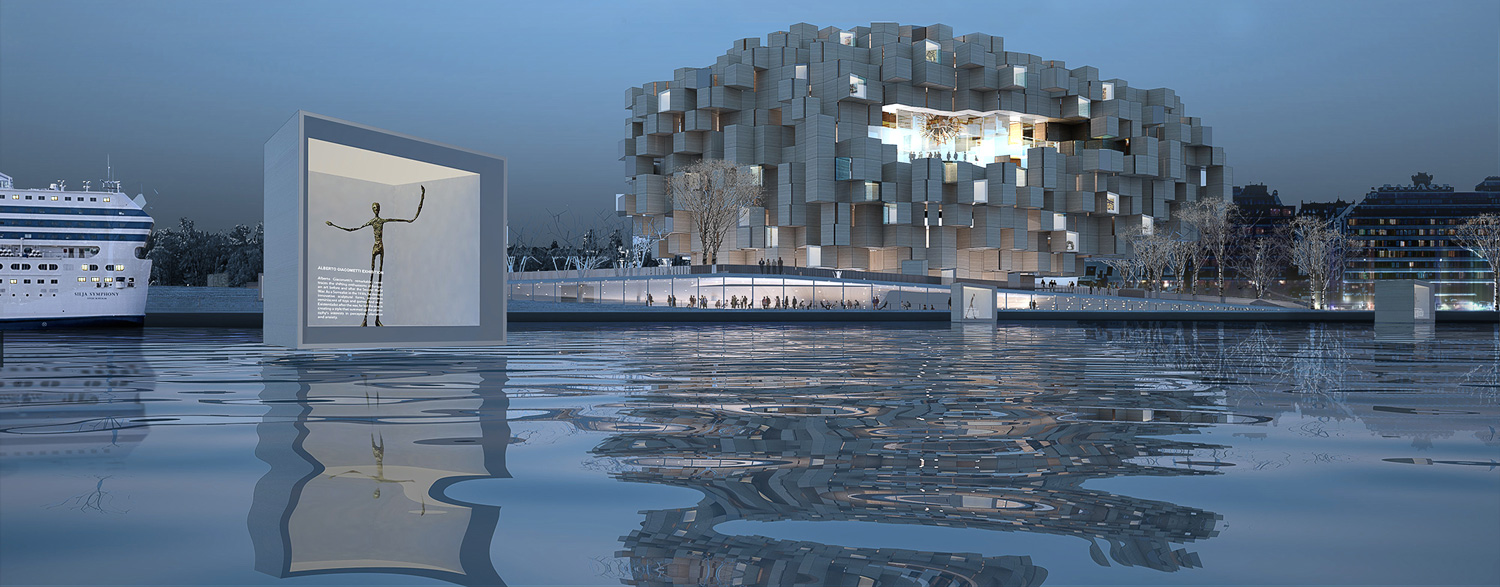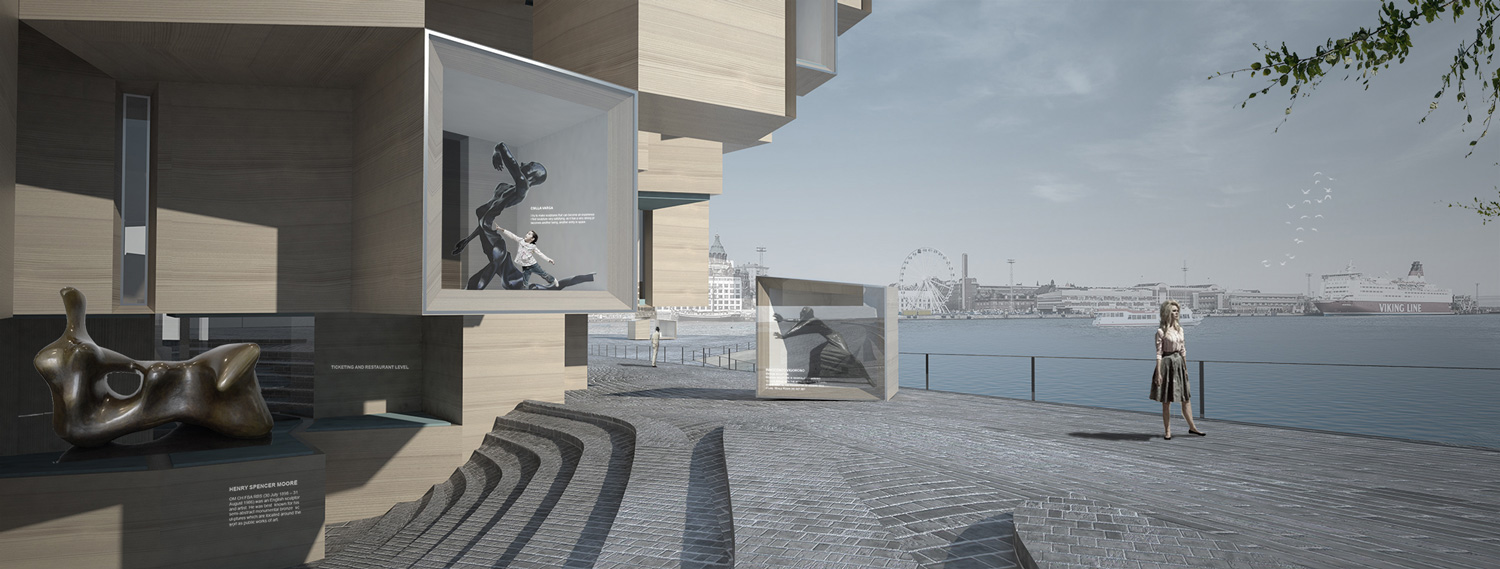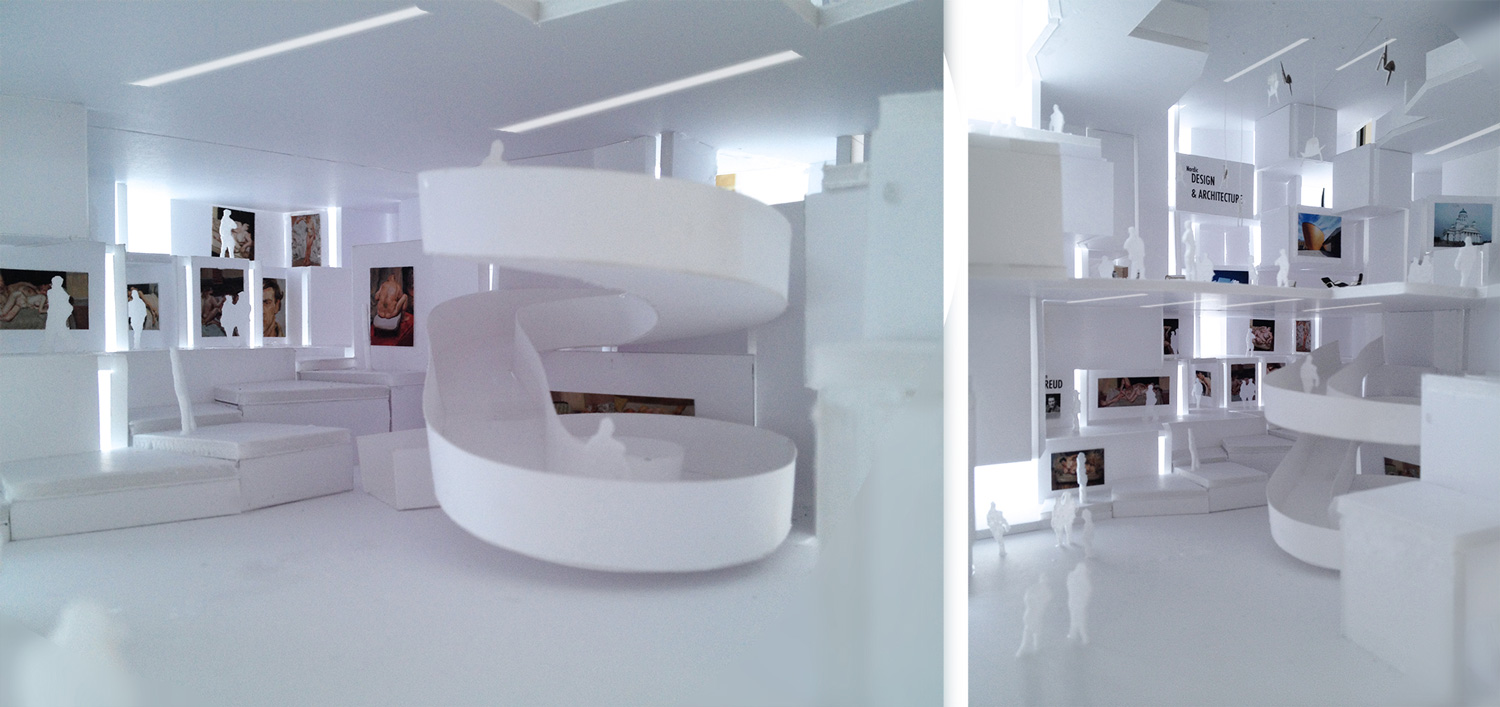☉ Guggenheim Helsinki is an honour mention competition entry by Ja Architecture Studio for Helsinki Municipality and Guggenheim Foundation in 2014. It is located in Helsinki Finland in a seaside and urban setting. Its scale is large. Key material is concrete. Review the 21 proposals for the same competition.
Helsinki is an egalitarian city within which institutions are accessible and humane. How can a building be both monumental and accessible at the same time? How can it be both contextual and yet with no precedent?
Our proposal tries to find the answer in timber by developing a porous wooden structure alongside the Helsinki harbour: a grand piece of nature that is harboured on the edge of the waterfront and is occupied with art, ecology and people.
A shift is proposed from the notion of the museum as a building within which art is displayed to a notion of a structure that is populated with art. The idea is to find a more immediate and direct relationship between the container and the contained. The structure will be created by an array of wooden pixels forming the exhibition spaces.
Pixels are stacked, merged or separated to create a diversity of use and experience needed for the museum.
The Experience‐ Every exhibition and every show will become an opportunistic challenge for the curator in finding a dialogue between the art and the space. Visitors will become explorers; art will become immediate as it disperses across the body of the ‘driftwood’ and the site. The scale of the structure will be simultaneously grand and small. The consolidated pixels will form larger spaces and the dispersed ones across the landscape will become territorial indexes for the museum to create a gradual transition from everyday life of the city to the elevating experience of the museum. The division between exterior and interior will be blurred; the continuity of indoor experience will be modulated with moments of views to the art pieces on the roofscape or to the Helsinki skyline.
The hollows; Four major openings are carved from the body of the structure to allow for the entry of people, light and views to and from the museum; two at the ground level to create diagonal entries to the building and the other two at mid level to become urban openings to connect the museum to the city landmarks and the harbor.
The two top hollows will also expose and add moments of major exhibitions to the skyline of the Helsinki.
Timber and Sustainability, the structure will be the largest precedent for CLT (Cross Laminated Timber) panels in the world, an evolving technology currently being used to maximize the potentials of wood in construction. The three dimensional wooden waffle‐structure will create rigidity across the three axes and the modularity of the panels can guarantee the efficiency of the construction method. The poche of the structure will become habitable and spatial; every wood pixel will be both a unit of structure as well as a unit of space and through that the thickness of the building becomes the thickness of the structure thus the long span over the openings will be done by the thickness of the spaces covering them.
The structure will be grand and yet the warmth of wood will make it humane and accessible, a sublime presence without being overpowering to the city or the viewers.
